| Chromosome | 17 |
| Position | 17409559 |
| Gene | PEMT |
CT (GA) CC (GG) TT (AA)40.6 40.6% 37.3 37.3% 22.2 22.2%
Breakdown:
- Each T allele causes lower levels of PEMT protein and therefore less phosphatidylcholine in the liver.
The T allele is associated with:
- Increased risk of nonalcoholic fatty liver disease (Ref).
- Possible increased risk of becoming overweight (Ref).
- Possible decreased levels of HDL cholesterol (good cholesterol) (Ref).
- Increased risk of Alzheimer’s disease in Chinese women (Ref).
- Decreased risk of having an infant with a neural tube defect (Ref).
- The T (A) allele= Lower levels of PEMT protein (Ref).
The C allele is associated with:
- Decreased risk of nonalcoholic fatty liver disease (Ref).
- Possible decreased risk of becoming overweight (Ref).
- Possible increased levels of HDL cholesterol (good cholesterol) (Ref).
- Decreased risk of Alzheimer’s disease in Chinese women (Ref).
- Increased risk of having an infant with a neural tube defect (Ref).
- The C (G) allele= Normal levels of PEMT protein (Ref).
rs7946, a SNP in the phosphatidylethanolamine N-methyltransferase PEMT gene and also known as +5465G-A, leads to a V175M (valine to methionine at amino acid position 175) substitution in the PEMT protein, and is a loss of function mutation. Caucasians with nonalcoholic fatty liver are more likely to carry the rs7946(T), with the effect being most pronounced for rs7946(T;T) genotypes. (Ref).
Having this SNP may be necessary, but is not sufficient, to cause fatty liver, as many individuals with the SNP have normal liver fat;
This SNP could perhaps slow down the export of fat from the liver, but only rs7946 carrying individuals who also take in too many calories too quickly (i.e. overeat) will wind up with fatty livers.
REGARDING NEURAL TUBE DEFECTS
This is pure speculation but perhaps the lower PEMT levels utilise less methyl groups and this lowers risk of Neural Tube Defects in babies?
It certainly would be useful to see if the diet of these studied women and their offspring was sufficient in phosphatidylcholine.
Neural tube defects are birth defects of the brain, spine, or spinal cord. They happen in the first month of pregnancy, often before a woman even knows that she is pregnant. The two most common neural tube defects are spina bifida and anencephaly. In spina bifida, the fetal spinal column doesn’t close completely. There is usually nerve damage that causes at least some paralysis of the legs. In anencephaly, most of the brain and skull do not develop. Babies with anencephaly are usually either stillborn or die shortly after birth. Another type of defect, Chiari malformation, causes the brain tissue to extend into the spinal canal.
The exact causes of neural tube defects aren’t known. You’re at greater risk of having an infant with a neural tube defect if you
- Have obesity
- Have poorly controlled diabetes
- Take certain antiseizure medicines
Getting enough Folates, before and during pregnancy prevents most neural tube defects.
Neural tube defects are usually diagnosed before the infant is born, through lab or imaging tests. There is no cure for neural tube defects. The nerve damage and loss of function that are present at birth are usually permanent. However, a variety of treatments can sometimes prevent further damage and help with complications.
Research articles:
- Genetic Variation in Choline-Metabolizing Enzymes Alters Choline Metabolism in Young Women Consuming Choline Intakes Meeting Current Recommendations.
- Dietary choline and betaine intake, choline-metabolising genetic polymorphisms and breast cancer risk: a case-control study in China.
- Phosphatidylethanolamine N-methyltransferase gene rs7946 polymorphism plays a role in risk of nonalcoholic fatty liver disease: evidence from meta-analysis.
- NAFLD Susceptibility Genes and their Association with Type 2 Diabetes and Obesity in a New Mexico Population.
- Maternal choline concentrations during pregnancy and choline-related genetic variants as risk factors for neural tube defects.
- Plasma choline metabolites associate with metabolic stress among young overweight men in a genotype-specific manner.
- PEMT G523A (V175M) is associated with sporadic Alzheimer’s disease in a Chinese population.
- Genetic variants in phosphatidylethanolamine N-methyltransferase and methylenetetrahydrofolate dehydrogenase influence biomarkers of choline metabolism when folate intake is restricted.
- People with fatty liver are more likely to have the PEMT rs7946 SNP, yet populations with the mutant allele do not have fatty liver.
- Common genetic polymorphisms affect the human requirement for the nutrient choline.
EXPRESSION CONTROL
Decrease activity ↓Increase activity ↑
Can work both ways ↑↓
